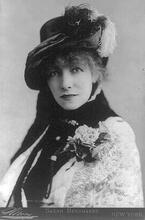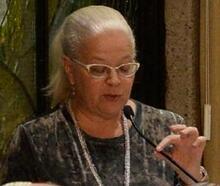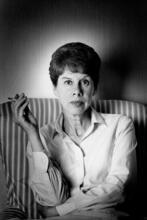Ana María Shua
Ana María Shua is an Argentine writer and screen writer. From micro fiction, poetry, and drama to novels, children’s literature, film scripts, short stories and other literature categories, her narratives have been read around the world. She is an internationally known specialist in short stories, in particular micro fiction tales, which are stories of just two or three lines. Shua’s work has been well received by critics and her writing has been translated in many languages. She is well known in the Hispanic world as the Queen of the Microstory and employs her writing to narrate various aspectshas of the Jewish experience. Moreover, her vast production of children books made her one of the most significant representatives of this genre in Latin America.
Family
A versatile and internationally known Argentine writer, Ana María Shua was born in Buenos Aires, on April 22, 1951, and at a young age became well known in the Hispanic world as “the Queen of the Microstory.” Her parents were both Jewish, her mother of Polish origin and her father from a Lebanese immigrant family. We learn through her writing, however, that she grew up mostly without religion, and her father was a well-known atheist. From her literary work dedicated to the experience of Jewish immigration and exile, we also learn that she has a sister in exile in the United States and many cousins exiled in Spain for political reasons.
Early Writing Career and Exile
Shua’s career as a writer began early. In fact, by age ten she had already created a poetry collection, and she was only sixteen years old when she published her first book of poems, titled El sol y yo (The Sun and I), which won two literary prizes in 1967. Some of her short stories and novels were adapted into movies, such as Soy paciente (I’m Patient) and Los amores de Laurita (Laurita's loves). She has also written plays and is the author of the script for the 1992 movie Dónde estás amor de mi vida, que no te puedo encontrar (Where are you love of my life, I can't find you).
During the earliest years of her writing career, Shua attended the Universidad Nacional de Buenos Aires. She worked as a journalist and an advertising copywriter while obtaining a master’s degree in arts and literature. In 1973 she was named Professor of Letters at the University. In 1975 she married architect and photographer Silvio Fabrykant; they have three daughters, Gabriela, Paloma, and Vera Fabrykant. The writer and her family lived in exile in France during the dictatorship of the Argentine National Reorganization Process from 1976 to 1983. While in Europe, Shua she worked for the Spanish magazine Cambio 16 and wrote her first novel, which was published in 1980 just after her return to her homeland. Her novel Death as a Side Effect (1997) contributed to her being named to the prestigious list of the 100 best novels published in Spanish in the last twenty-five years. Her most recent novel, Daughter, was published in 2016, the same year a jury from Spain, Mexico, and Argentina awarded her the first Juan José Arreola Ibero-American Prize for her contribution to the literary genre of the micro-fiction.
Writing in Multiple Genres
Shua has published in many literary genres, including micro-fiction, poetry, drama, novels, children’s literature, film scripts, and short stories. She is particularly well known for her micro-fiction tales, stories just two or three lines long. Shua’s work has been well received by critics and her writing translated into many languages, including French, German, Bulgarian, English, Italian, Portuguese, Serbian, Dutch, Swedish, Japanese, and Korean. She has received numerous prizes and awards, including the Losada publishing house prize in 1980 for I’m Patient (1980), the Guggenheim Scholarship for The Book of Memories, and the Club de los XIII Award and City of Buenos Aires novel Award for Death as a Side Effect (1997). In 2014 she received the Konex Platinum Award and the National Literature Award. Her books for children and young adults have also won national and international awards and continue to be read not only throughout Latin America and in Spain but around the world. Her vast production of children books made her one of the most significant practitioners of this genre in Latin America. She demonstrates a remarkable mastery in engaging a young audience through life-affirming messages and a literature capable of entertaining and instructing young people.
Jewish Themes
Although Jewish cultural and political topics have not always been central to Shua’s writing, the books she published between 1993 and 1995 focus prominently on Jewish culture, folklore, historical conventions, customs, and beliefs. In particular, Jewish immigration and identity are at the center of her nationally and internationally celebrated El libro de los recuerdos (The Book of Memories), originally published in Spanish in 1994, which traces three generations of the Rimetka family (her own family), following them on their journey from Poland to Argentina. In this book the author recreates the story of her maternal grandparents. Shua herself had been forced to leave her home country during the military dictatorship, placing her work in the genre of Argentine exile literature. In this work, Shua utilizes a family album that evokes memories, reflections, and traditions, with the Jewish family's history, as seen through the eyes of three generations of women. Shua demonstrated how memories are associated with photographic images. Based on her autobiographical writing, we learn that she grew up in a household that followed Polish Jewish culture and traditions described in the book. At the same time, The Book of Memories shows how Argentine political and national identity has been shaped by Jewish immigration.
Another important text dealing with Shua’s Jewish identity is El marido argentino promedio (The Average Argentine Husband), first published in 1994 in Buenos Aires, in which Shua clearly illustrates both her Polish (Ashkenazic) and Lebanese (Sephardic) ancestry, tracing the major characterizations of these two countries that represent Jewish immigration to Argentina. Immigration is one of the main topics in Shua’s work, in which she aims to compare her grandparents’ immigration experience with the struggles related to her own and her family’s exiles.
Among Shua’s other narrative pieces around Jewish themes are Cuentos judíos con fantasmas y demonios (Jewish Stories with Ghosts and Demons), published in 1994, and El pueblo de los tontos: Humor tradicional judío (The People of Folly: Traditional Jewish Humor), published in 1995. Both of these works focus on themes that are traditionally Jewish, representing the Argentine immigrant Jewish experience with humor and socio-critical commentaries. Her peculiar narrative is easily recognized by the use of humor as a literary tool to feel closer to her audience, breaking monotonous, tedious, and wearisome patterns that are often representative of modern literature. One of her main goals remains to make audiences happy and relaxed. This mode of expression especially characterizes her short stories and novels, as well as the well-received 1993 humorous cookbook Risas y emociones de la comida judía (Laughter and Emotions of Jewish Food). In this volume, she tries to answer some crucial and comical questions relating to Jewish culinary culture, such as whether a Jewish mother should sit with her guests or stand and keep working to make the guests feel guilty, or what an authentic chicken soup has that cannot be found in a broth. This cookbook is a humorous and emotional literary journey, full of memories and reflections, but it also contains 80 rigorous and legitimate recipes, which allow readers to create traditional European Jewish cuisine while appreciating the value of Jewish cultural and national heritage.
Distinguished Reputation
Ana María Shua remains one of the most prominent female figures in Latin American literature. Considered the queen of micro-stories, she has written about a thousand short tales about a wide range of topics, including death, desire, philosophical considerations, the role of the writer and of literature in general, and the strange, monstrous, and deformed body. Her micro-fiction writing has been recognized for the display of humor, imagination, and quirks of language and it is rarely longer than a paragraph. Her collection entitled Microfictions, published in 2009, puts together more than 200 pieces from four of Ana María Shua’s more renowned works of flash-fiction. She often claimed that this new genre is capable of conveying meaning and entertaining and compelling the readers in the same way that traditional longer fiction does. In these short stories, she always portrays unusual ways of seeing things, unexpected finales, and ingenious plot twists. Shua is thus one of the major figures of what in United States is known as Flash Fiction, an innovative form of narrative that celebrates brevity and semantic depth. With more than 40 books published in almost every literary genre, she has become an icon in contemporary Argentine fiction and remains one of Argentina’s most prolific female writers, distinguished and acclaimed worldwide.
Beard, Laura. “The Dark Side of Domesticity: Ana María Shua's ‘Como Una Buena Madre.’” Storytelling 6, no. 2 (2007): 71-77,141.
Dapía, Silvia G. "Polish and Jewish Identities in the Narratives of Ana María Shua." Polish American Studies 65, no. 2 (2008): 53-69.
Pollack, Beth. “Scribe of Time and Memory: (con)textualizing the Jewish Experience in Ana María Shua.” In El Río De Los Sueños, edited by Rhonda Dahl Buchanan. Interamer (2001): 117-127.
Ferrero, Adrián. “Ana María Shúa.” Hispamerica 45, no. 135 (2016): 73-82.
Ferrero, Adrián. “All the Deliberate and All the Involuntary. Interview with the Argentinian Writer Ana Maria Shua.” Confluencia-Revista Hispanica De Cultura Y Literatura 21, no. 1 (2005): 212-24.
Gatti, Giuseppe. “An ultra-brief dialogue as a denunciation of repression: Grotesque and metaphor in the micro-narratives of Istvan Orkeny and Ana María Shua.” Verbum 15, no. 1-2 (2014): 223.
Halbert, William Docherty D. “The Good, the Bad and the Author: Idealized Reader Constructs in the Short Fictions of Jorge Luis Borges, Julio Cortázar and Ana María Shua.” Forum for Modern Language Studies 52, no. 4 (2016): 449-67.
Rotger, Patricia Hilda. “Monsters and Affections: The Forms of Fear in Stories of Ana María Shua.” Estudios De Teoría Literaria 7, no. 13 (2018): 21-28.
Roberta Previtera. “Entre La Risa Y El Escalofrío: La Metaficción En Los Microrrelatos De Ana María Shua.” Brumal: Revista De Investigación Sobre Lo Fantástico 6, no. 1 (2018): 91-103.












